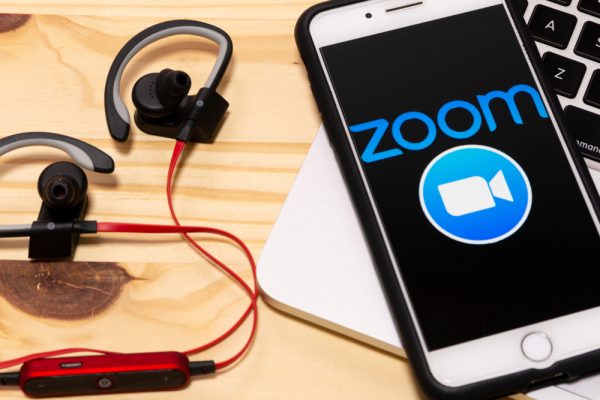Top Takeaways
|

When the pandemic lockdown hit, West County Health Centers knew it had to do something for its patients needing health care. Its solution: A Zoom Clinic.
Not satisfied to simply connect with patients online, West County went a step further. Using the Zoom breakout room feature, West County set up breakout rooms similar to exam rooms and familiar locations such as the back office, provider office, and care team room. Using the Zoom host and Zoom waiting room settings, the health centers technology team created a waiting room and a concierge.
The goal here was to improve the remote experience for staff and patients by mirroring in-person visits. The role of the concierge, for example, is similar to that of a Zoom host. This person remotely admits staff, makes them co-hosts, then moves them to their assigned care team room. The concierge also listens and waits for patients to arrive to the virtual waiting room, admits them one by one, verifies the patient, then moves them to their virtual exam room.
Now, of course, Zoom is hardly a novelty. But for many at the beginning of the COVID-19 response, it was unfamiliar and both patients and providers were resistant to using it. West County, as it typically does, piloted the concept with one care team at one clinic to address any issues. The role of the Zoom concierge, played by IT department members, wasn’t just to make patients feel at home. It was also developed to ease pushback and hesitancy about the technology and multitasking. The IT concierges worked out kinks in the system and developed training and support materials for the staff.
The pilot proved a success, and the health centers integrated the concept across all locations. But there was little time to pat themselves on the back. The IT Department realized that in the rush to get a clinic model up and running on Zoom, behavioral health providers were inadvertently omitted from the pilot process, training, testing, workflow, and integration.
On to the next challenge: As part of CCI’s Connected Care Accelerator, the IT team looked at how and whether it could integrate behavioral health visits into the Zoom Clinic so providers could see patients without using their individual Zoom accounts. In doing so, they stumbled upon some discoveries for innovation and improvements around integrating and delivering care across primary care and mental health specialties.
Bringing behavioral health on board
“One of the biggest fears was the very real need to be able to assist patients with their own technology issues while keeping the clinic running on time.”
–IT team member
Virtual video visits raise some challenges in this area. West County Health Centers is a federally qualified health center with three primary care sites, a dental clinic, a teen clinic, a wellness center, and mental health services in Western Sonoma County in Northern California. Twenty percent of its patients are monolingual Spanish language speakers. It serves a mostly rural community—the service area covers hundreds of miles—and many of its patients have limited or no access to broadband.
But the organization is committed to meeting patients where they’re at. The health clinics solved the connectivity conundrum by providing access points at libraries and schools for Wi-Fi coverage. In the switch to operating with Zoom, patients first virtually see the front desk before they are moved to exam rooms where they then meet with medical staff, including nurses, physician assistants, and doctors. Video visits climbed from 30% to 50% usage to becoming the default telehealth method, as opposed to phone-only appointments, according to a recent news account.
How next to bring behavioral health on board? The health center learned that telehealth aside, big gaps existed in the organization’s approach to integrating behavioral health care into the health centers’ overall workflow. This required a cultural shift within the organization, recognizing behavioral health providers as full members of the care team.
On the internet infrastructure end, behavioral health care providers needed their own breakout rooms, including an office — for times they were not seeing patients and visiting rooms for when they were in session. That’s a shift from their in-person set up, where the behavioral health team has its own suite of offices and a designated receptionist.
It took some education and reinforcement to ensure that behavioral health providers were assigned to the care team breakout room, versus isolating them during the clinic shift. That has proven beneficial in many ways. Warm “hand-offs” prove easier to access when everyone is in the same Zoom link. And having the behavioral health providers present during clinic time helps to create an integrated workforce culture and emphasizes to the primary care team that behavioral health support is readily available—in this case, literally just a click away.
“Before Zoom Clinic, if you needed a behavioral health provider, you would have to get in touch with the BH front office receptionist to see who is available and if they could come into the room,” explains Minda Perez, office manager for the Russian River Health Center. “In Zoom, you can see at a glance where they are, who it is, and if they are with a patient or not, You can navigate your patients’ needs in real time.”
The integration allowed for a culture of collaboration with mental health providers that was difficult to foster in the center’s previous mostly in-person work environment, notes Summer Penn, director of information technology at West County Health Centers. According to Penn, the presence of mental health providers on Zoom was directly related to “the interest and openness of primary care providers and nurses learning behavioral health skills” in their work with patients.
Behavioral health providers appreciate these virtual partnerships—especially in a community that serves patients across a large geographic area. “Over Zoom, I have had the opportunity to collaborate with a wide range of providers from my home clinic in Guerneville, as well as associated clinics in Occidental or Sebastopol,” says Amanda Stanitsas, a behavioral health provider. “I have been able to work in a collaborative manner with medical staff in a joint effort to support our patients in a number of ways, including providing warm hand-offs, connecting about patient needs, and providing insight regarding progress and growth made in behavioral health sessions.”
There are other tangible benefits to the shift. “I am able to join a huddle where the team discusses patients on the schedule for the day, and if I am available, I offer my services to bridge the relationship between medical and behavioral health,” she says. “Working as a collaborative team in a relational manner is a goal we have had as a clinic, and I look forward to continuing to build relationships and help make this joint effort stronger.”
Lessons Learned
- Segregating behavioral health providers from the rest of the health centers systems and workflows isn’t beneficial to continuity of care.
- Transferring patients is easier and more efficient when behavioral health patients and providers are in the same Zoom Clinic as the rest of the care team.
- Synching schedules and assignments between behavioral health providers, care team, and primary care providers can allow for more support between parties.
- Having behavioral health providers present for the entire care team during a clinic shift helps develop collaborative working relationships between medical and behavioral health.
|
The COVID-19 pandemic upended the way California delivers health care. Health care systems completely restructured their services to keep both their patients and employees safe. Federal policymakers acted quickly to expand coverage and payment for virtual care. The California Department of Health Care Services also dismantled previous barriers to telehealth and began requiring Medi-Cal managed care plans to pay providers for telephone and video visits at the same rate as in-person visits. As a result, many California health care providers rapidly pivoted from in-person visits to virtual patient visits. For these organizations, this shift has been transformational, as they’ve adopted new technology, overhauled workflows, and redefined team member roles. The Connected Care Accelerator — a partnership between CCI and the California Health Care Foundation, with additional funding from the Blueshield of California Foundation — selected 40 safety net healthcare centers in California to participate in a 12-month program that provided funding, methods, tools and hands-on technical assistance to enhance virtual care initiatives. In a series of case studies, CCI showcases the most sustainable and impactful solutions and shares advice for fellow safety net clinics who want to integrate similar virtual care strategies. |
Find this useful or interesting? We’re constantly sharing stuff like this. Sign up to receive our newsletter to stay in the loop.

